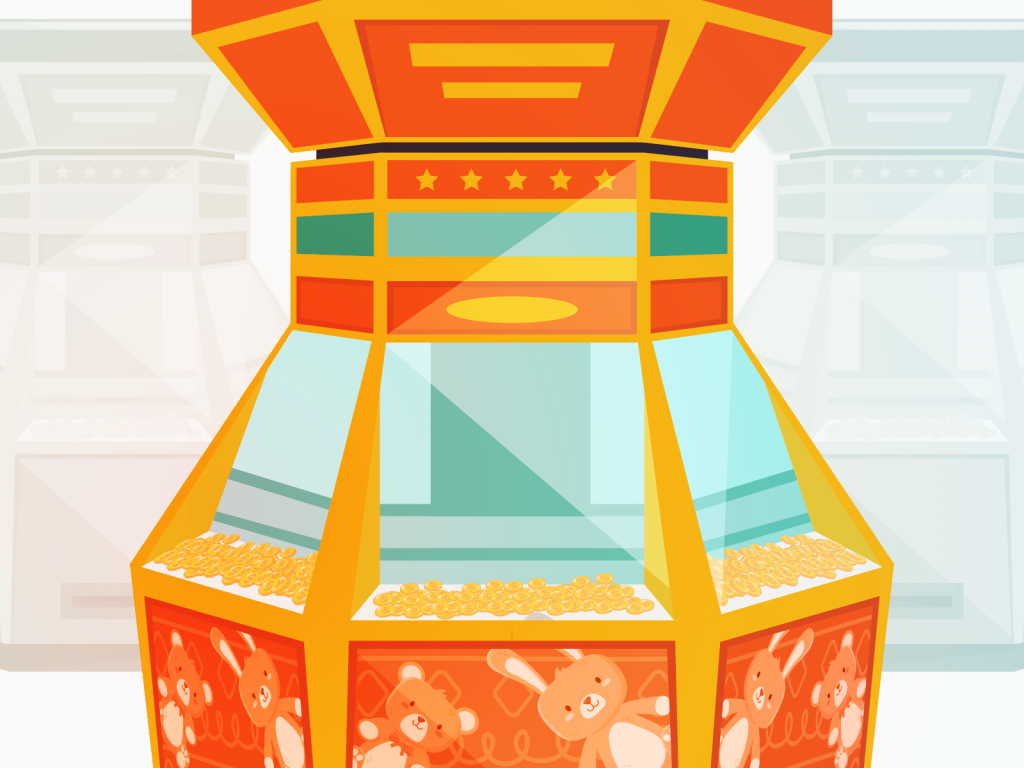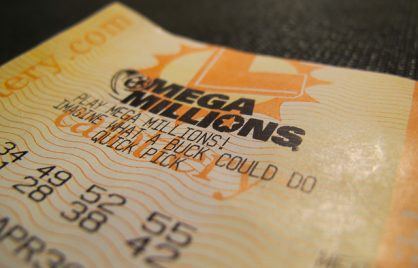Do Arcades And Claw Machines Turn Kids Into Gamblers?

There’s nothing new about it. Parents give kids rolls of quarters to pour into arcade machines, buying them plenty of fun and entertainment.
But when those arcade games award tokens, or kids use their arcade credits to play the claw machine to try and win prizes, does that cross the line into gambling?
Gambling is strictly regulated, with laws and age restrictions in place. So why are kids allowed to play these eerily similar games?
Should they be considered gambling, and if so, what does that mean for children?
Are Arcade Games Gambling?
Although it depends on each US state, arcade games are generally not considered to be gambling for two major reasons:
- They are ‘games of skill’ where players have some control over the outcome of the game.
- Arcades do not pay out cash prizes.
In the UK, there are three types of amusement arcade that are regulated by the UKGC.
The gaming machines in the arcades are categorized by things like licensing, restrictions, maximum stakes, etc. to determine if they are a form of gambling.
The games available to children at most British arcades are ranked as “category D” gambling machines, such as coin pushers and crane grabs.
Category D machines have maximum stakes of between 10p to £1 and a maximum monetary prize of £10. Non-monetary prizes can be worth more.
Despite being recognized as low-level gambling machines, it is still legal for children of all ages to use category D machines.
Similarly to the US, children are also allowed to play machines known as skill with prizes (SWPs) where a games tests a player’s “skill” to win a prize – rather than a game of chance.
SWPs are usually found outside of arcades in places like shopping malls and cinemas.
Addictive Features Similar To Slot Machines
In both countries it’s common for arcade games to pay out tokens or other items that can then be redeemed for prizes.
By keeping the value of the prize below a certain amount, it means the games can be classed as a form of entertainment or skill game instead of gambling.
But even if the prize is a small stuffed animal, the similarities these arcade machines have to adult gambling games is shocking.
Both make use of the same addictive features that keep gamblers hooked at casinos: The thrilling chance of victory, bright lights and sounds, and intermittent rewards.
Two iconic arcade games played around the world are the “coin pusher” where players try to dislodge money by adding their own coins and the “claw grab,” a game where players try to pick up prizes with a remote-controlled claw.
Both the coin pusher and the claw grab are made to feel like skill-based games, meaning that players believe it’s their skill and not luck that decides whether they win a prize.
But in reality, this isn’t the case.
According to Vox the claw grab arcade game is set up with a standardized return to player (RTP) rate, just like regular slot machines.
In other words, the game decides when you win and has nothing to do with your ability.
And when a game chooses who wins and when, the wins are unpredictable – and that’s when they become addictive.

Research Shows Arcade Games Can Lead To Problem Gambling
Although games like the claw machine are legally available to children and are classed as games of skill, there is no denying that they can be highly addictive.
And research shows that it’s this addictive nature of low level gambling games that can lead children to develop serious gambling habits as they age.
A recent 2022 survey by the UK Gambling Commission revealed that 31% of children (aged between 16-11) had spent their own money on gambling in the previous year. 22% of them had chosen to do so in arcades.
The most popular games played were the coin pusher (73%) and the claw grab (72%), both of which have been linked with problem gambling behaviors in adults.
A scientific journal that examined gambling habits in the UK and Australia revealed that 60.8% of Australian gamblers reported using coin push machines as a child, compared to 48.6% of Australian non-gamblers.
This research suggests that playing coin pusher as a child can lead to problem gambling in adulthood.
In the US, coin pushers are legal under federal law, however many states have banned them. Coin pushers may be banned but claw grab games are readily available across the country.
The current view is that the prizes available are too inexpensive for the game to be considered gambling, however, research shows that it is often the act of playing – not the value of the prize – that leads to gambling addiction.
This means that, despite the small prizes, American children may still end up addicted to low stake, low prize arcade games like the claw grab.
While this may not be a problem at first, much like drug addicts, gamblers steadily become immune to their high, which leads them to chase higher stakes to experience the same thrills.
All of this means that children who start out on the claw grab arcade game may progress to riskier forms of gambling as their addiction progresses.
The Rise Of Casino Arcades
21% of tourists that visit Las Vegas now bring their children with them. This increased demand for kids’ entertainment has led some casinos to build their own arcades.
One example comes from Bally’s – now known as the Horseshoe – which has replaced its small sportsbook with a children’s arcade.
This arcade, like a lot of others in Las Vegas, has games that are extremely similar to those found in the real casino.
While providing a means of child-friendly entertainment, arcades can also make a lot of money for the casino; in fact, a typical arcade game makes the same amount per day as a regular slot machine.
But some people find casino-based arcades uncomfortable as they believe these games in the casino environment are actively preparing children to become future gamblers, in a similar way to how branded candy cigarettes led children to become smokers.
Should Arcades Be More Tightly Regulated?

If research has proven the links between children playing arcade games and developing a gambling habit as an adult, then many people will wonder why arcades are not more tightly regulated.
In some instances, they have been.
2019 saw Britain ban under 16s from playing category D slot machines. But other games, like the coin pusher, remained legal for all ages.
This is even though the European Lotto Betting Association itself has stated that children should not have access to any gambling products, especially category D games like the coin pusher or claw grab, as they offer a gateway into more serious gambling.
The British Amusement Catering Trade Association has tried to calm fears over these games by changing its voluntary code, raising the minimum age of some category D games to 18.
As this change is voluntary arcade owners can still ignore it and many do, mainly as high energy costs have put financial pressure on arcades.
Unfortunately, many arcade owners can’t afford to pass up the extra money that children spend on category D games.
What’s more, there are fears that if the UK’s arcades become too heavily regulated then they’ll have to close. This would mean a loss of nearly 20,000 jobs and around $1 billion for the economy.
To make matters even worse, many of these arcades are in some of the country’s poorest towns, meaning their closure could have terrible consequences for the people who live there.
Instead of tighter regulation, it has been suggested in the past that arcades pay a levy to help with gambling research and treatment.
However, this has also been met with strong opposition by arcade owners, many of whom say they cannot afford to give any money away.
NHS England opened its first gambling addiction clinic for children in 2019, following a rise in numbers of children with gambling problems.
In the US, there has been a large increase in the number of high schoolers gambling since the legalization of sports betting, with an alarming 6% reported as having an addiction.
Helplines, self-help groups, and special counseling sessions have all been created to provide ways for children and their families to deal with gambling addiction but the percentage of high schoolers becoming addicted to gambling has continued to rise.
So where does the responsibility lie?
Everyone, from arcade owners and casinos to parents and schools, has a role to play in mitigating addiction.
Arcades should be fun, but it’s clear they cross the blurred line into gambling, so should be treated with caution by everyone to ensure children stay safe.


